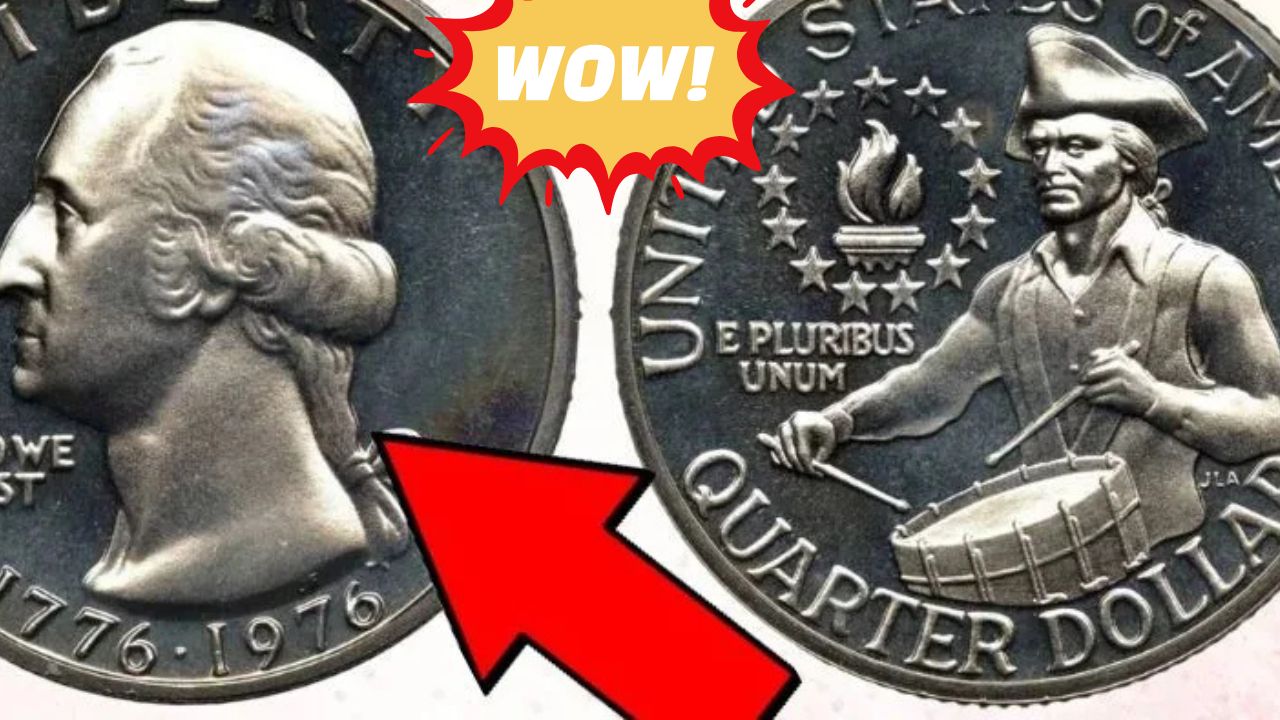In the fascinating world of coin collecting, it’s not always the ancient or rare centuries-old coins that grab attention. Sometimes, the most valuable treasures come from everyday pocket change — like a 1976 quarter that recently surfaced from a private collection and was appraised at over $20,000. This unexpected find is thrilling both seasoned numismatists and casual collectors, proving that history and value can hide in the most ordinary places.
A Special Year in U.S. Coin History
The 1976 quarter holds a special place in American history. Minted to celebrate the United States Bicentennial — 200 years of independence — these quarters are unique. They feature a dual date, 1776–1976, and a distinctive reverse design depicting a Colonial drummer, created by artist Jack L. Ahr.
The U.S. Mint produced millions of these Bicentennial quarters at the Philadelphia and Denver mints, plus a special silver collector’s set from San Francisco. While most coins were standard, a very small number were struck with rare errors or on the wrong planchets, making them extremely valuable today.
The $20,000 Discovery
What makes this 1976 quarter worth more than many luxury cars? The answer lies in its rarity and condition. This coin was mistakenly struck on a 40% silver planchet meant exclusively for collector sets, yet it entered regular circulation — a mint error that should never have happened.
Adding to its value, the coin exhibits proof-like qualities, meaning it has sharp, mirror-like surfaces and frosted details. It has never been cleaned or heavily circulated, remaining in near-perfect condition. After decades hidden away in a coin folder, the coin was recently authenticated and graded by the Professional Coin Grading Service (PCGS), confirming its status as a rare mint error with an appraised value exceeding $20,000.
Why Are These 1976 Quarters So Valuable?
Most 1976 quarters are worth only their face value, but rare variants can fetch thousands due to a few key factors:
- Struck on silver planchets that were never meant for circulation
- Off-metal errors or coins struck on foreign or incorrect blanks
- Proof errors with mirror-like finishes and frosted designs
- High-grade condition (MS-67 or higher) indicating minimal wear
- Low population — very few examples are known to exist
Collectors highly value these rare combinations, especially when backed by certification from trusted grading services.
How to Identify a Valuable 1976 Quarter
If you want to examine your own Bicentennial quarters, here are some tips to help you spot a potentially valuable coin:
- Check the weight: Standard clad quarters weigh 5.67 grams, while silver versions are slightly heavier at 5.75 grams. A precise scale can help.
- Inspect the edge: Silver quarters have a smooth, solid edge. Clad quarters show a copper stripe in the middle.
- Look for the mint mark: An “S” mint mark indicates the San Francisco mint, which produced the silver collector versions.
- Observe the coin’s appearance: Strong luster, mirrored finish, or unusual details may signal a proof or error coin.
- Perform a magnet test: Genuine quarters are not magnetic, so be cautious if your coin sticks to a magnet.
Why This Coin Matters to Collectors
This rare 1976 quarter is more than just a piece of metal — it’s a tangible connection to a defining moment in American history. Its discovery shows how even coins from recent decades can hold surprising value. For collectors, it’s a reminder that treasures can be hiding in everyday change, waiting to be found.
Whether you’re a seasoned numismatist or someone who enjoys the thrill of the hunt, checking your coins for rare errors and unique features can be rewarding. With the right knowledge and tools, you might just uncover a valuable piece of history.
